Speak with Alex Papachristidis about design, and you’re likely to hear comfortable and individual come up time and again, sprinkled with the occasional my darling. If you know Alex primarily from his grander designs, spotlighted in the likes of Architectural Digest and Town and Country, this emphasis on comfort in particular might at first seem surprising.
But no matter how lavish and even fantastical his rooms may look, every one is indeed designed for comfort. “I think furniture should be very beautiful but very comfortable and human,” Alex says. “I’ll sit on every piece of furniture before it goes to the client. I want you to use your house. I want you to use your furniture. An elegance killer to me is that something should feel uncomfortable for any reason.”
What makes a home elegant is at the core of Alex’s latest book, The Elegant Life, which features a dozen of his recent projects. When asked how he defines an elegant life, Alex says, “It’s about a beautiful home and beautiful interiors but also the way you behave in your house and the sense of hospitality.” And hospitality includes “sofas that are comfortable, chairs that are inviting. Not rooms that are too precious to sit in. Rooms that are individual and reflect the individuals who live in them.”
In his own Manhattan apartment, for instance, Alex selected every animal and color that appears in the living room’s bespoke wallpaper, and because he always wanted a tented room, he gave the entry a tented treatment. “Everything in my home has a story, my darling,” he says. “Every single thing I remember where I bought it, whether it belonged to Bunny Mellon or was a painting I bought on a street.”
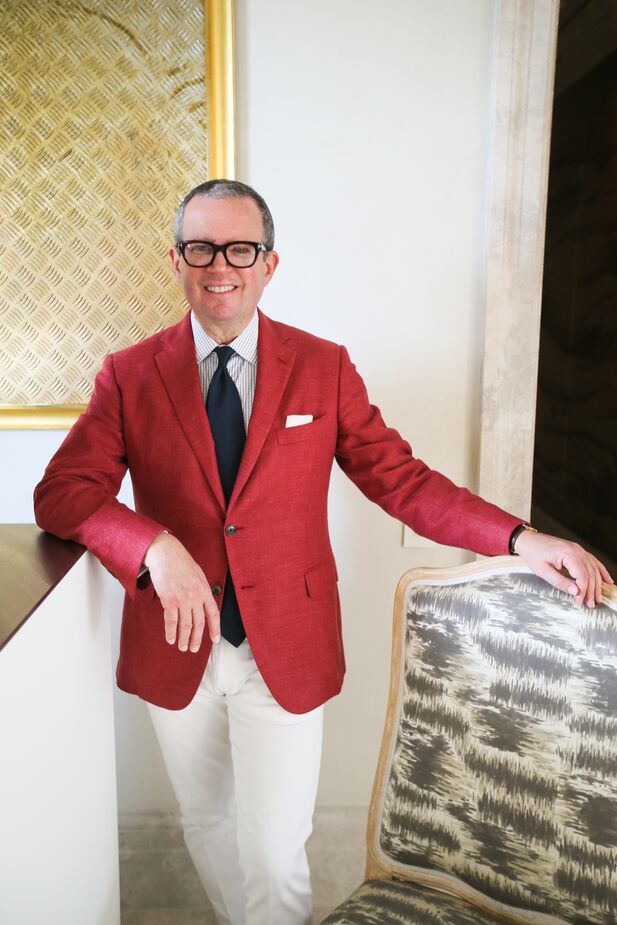
Designer Alex Papachristidis. Photo by Donna Newman.

In this Park Avenue living room, the seating is positioned to encourage conversation as well as contemplation of the clients’ art collection, which includes works by Richard Prince (over the mantel) and George Condo (above the sofa). Photo by Richard Powers.
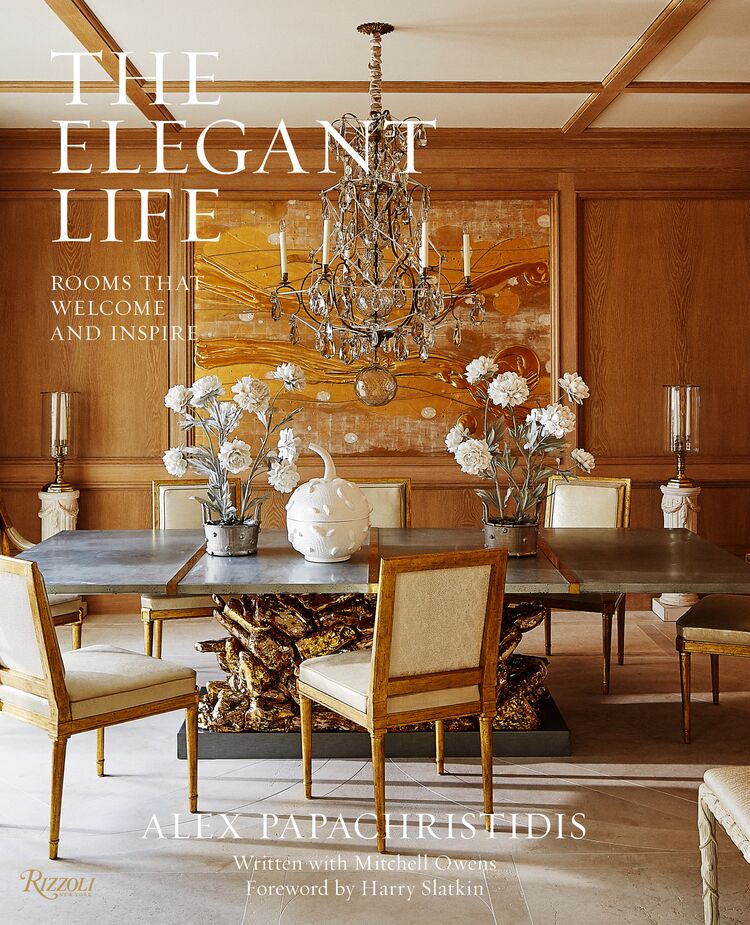
And yes, Alex does indeed buy artwork from street vendors, part of his embrace of a high-low mix. “Even in my fanciest job I’ll find a wicker basket that’s $45 and place it on top of an 18th-century desk,” he says. He also has been known to accessorize with pineapple trees from Trader Joe’s: “Of course, I put them in baskets. They look like a million bucks.” And especially for clients with kids and pets, he’s a fan of covering furniture with batik throws—“they look great on upholstery, they’re inexpensive, they’re machine washable!”
All this supports his belief that one can live an elegant life regardless of one’s budget. “Understand that something can be inexpensive but still be beautiful,” Alex says. And by beautiful, he means beautiful to you. “Find who you are, find your own sense of style.” And that’s the number-one lesson he hopes readers take away from The Elegant Life.
Image at top of page: Alex’s room from the 2016 Kips Bay Decorator Show House. The 18th-century dining chairs encircle a contemporary table by artist Eve Kaplan.
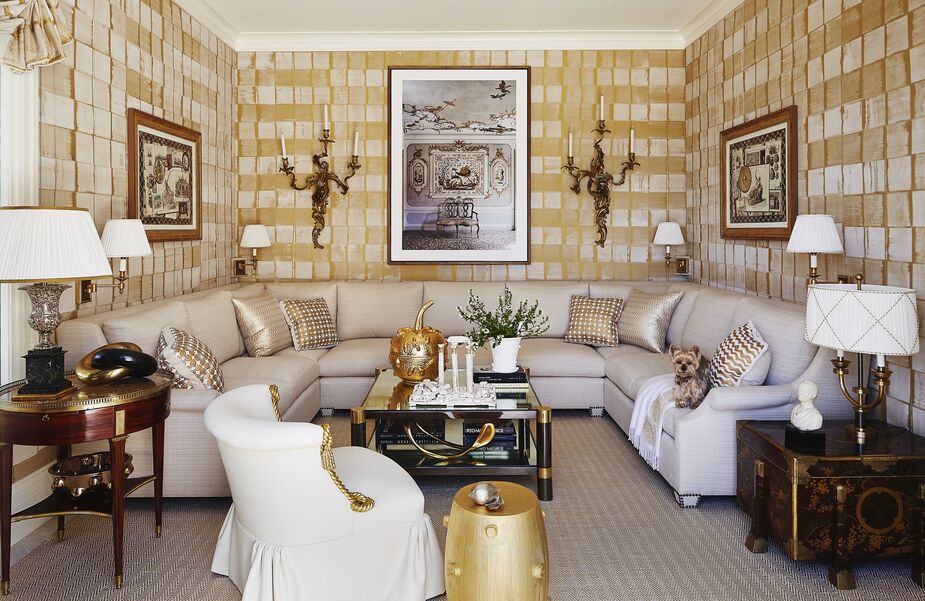
Alex’s sister requested a gold, silver, and white color scheme for her Hamptons beach house. While opulent, the sitting room is still, above all, comfortable. The expansive custom sofa easily seats a crowd; at the same time, multiple sconces allow one to transform the space into a cozy reading nook. Photo by William Abramowicz.
More Wisdom from Alex Papachristidis
• “Throwing in a shot of an interesting color makes a room.”
• “I love things that feel like the 18th century. If you actually look at an 18th-century textile, the colors were quite strong, but I love the idea of colors that have faded a bit. To me that feels timeless.”
• “Buy what’s out of fashion, because that’s when it’s great value.”
• “Scale and proportion is the most important thing in decorating. When somebody sits down in a chair and they can’t get out of it, that’s an elegance killer.”
• “Everything in the room cannot be screaming ‘Look at me.’ There needs to be a harmony in a room and a balance. It needs to flow and connect. You don’t want to be jarred from room to room, because that’s not elegant.”
• “Decorating should be fun. It’s a luxury and a pleasure, and I like to make decorating fun. [With my clients] we laugh and we joke and we travel and eat lunch together. It’s fun for me to understand how people want to live and get to know them.”
• “I don’t think it should ever be about the room but the way people use the room.”
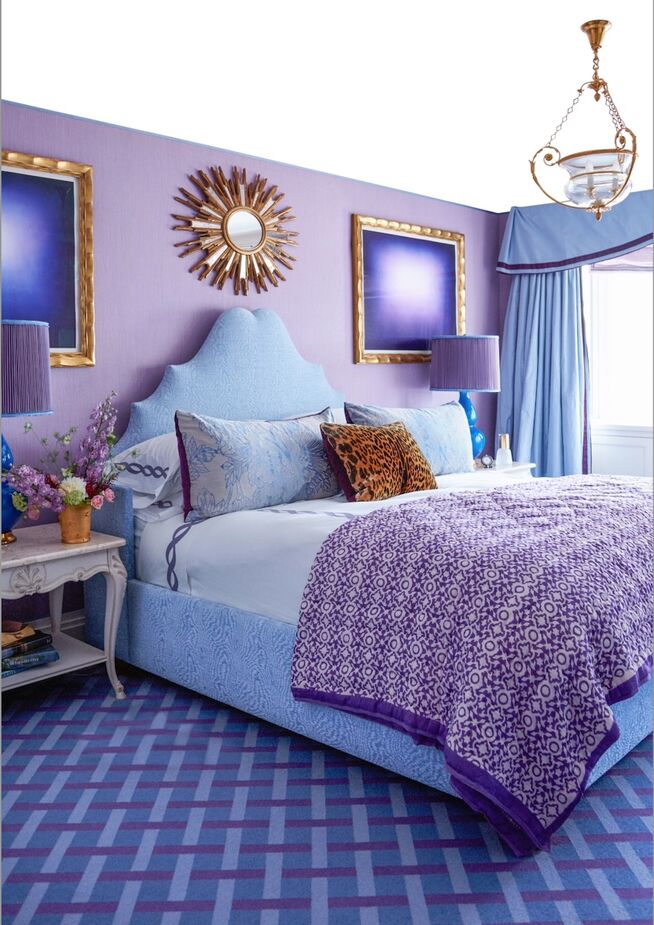
“I like interesting uses of color,” Alex says, and that’s apparent in this bedroom he designed for his niece and her husband. It also shows his ability to pair the classical (the nightstands, the ceiling fixture) with the contemporary (the Anish Kapoor prints in their gilded frames). Photo by Mikkel Vang.
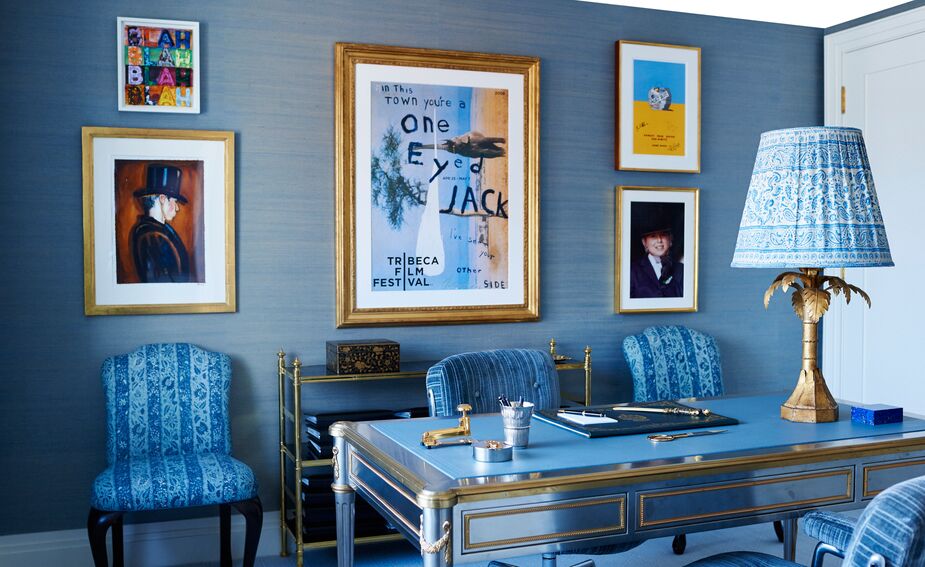
His niece’s study provides more proof that mixing provenances and styles makes a room more personal. Here, contemporary prints hang behind a 20th-century Louis XVI-style writing desk by John Vesey, while a batik shade rests atop a vintage table lamp. Photo by Mikkel Vang.
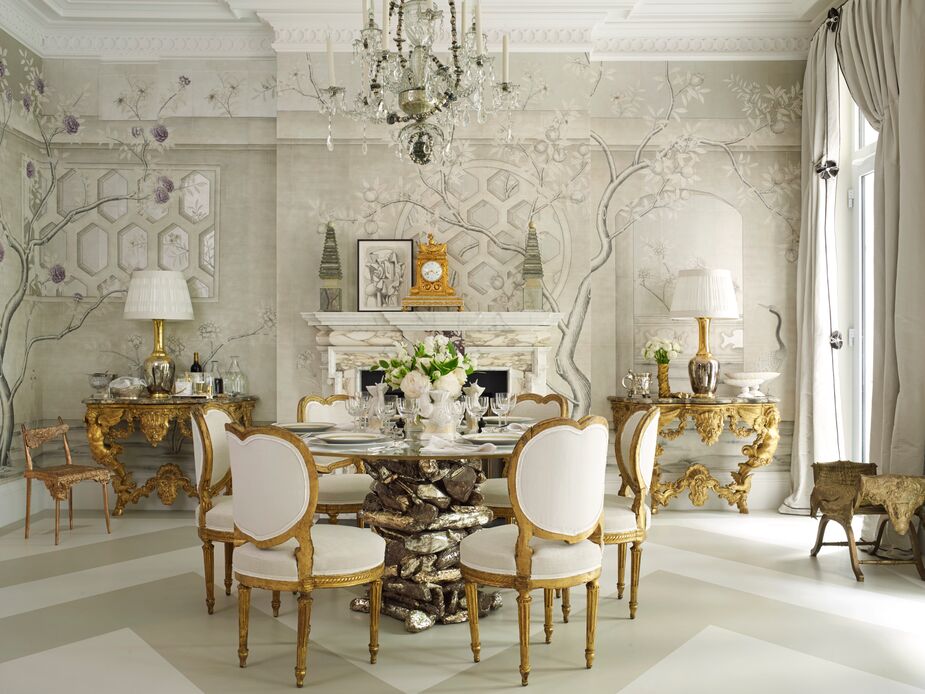
Join the Discussion